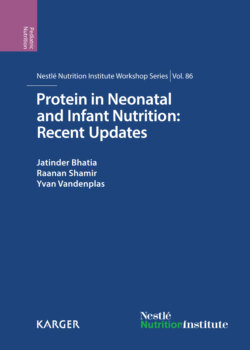Читать книгу Protein in Neonatal and Infant Nutrition: Recent Updates - Группа авторов - Страница 26
На сайте Литреса книга снята с продажи.
Cow’s Milk Proteins
ОглавлениеCM presents two different fractions of proteins: casein (Cas) and whey proteins, both with allergenic properties. Whole Cas consists of four major proteins (αs1-, αs2-, β- and κ-Cas; Bos d 8) plus three γ-Cas deriving from the hydrolysis of β-Cas, namely γ1, γ2 and γ3. In whey, there are α-lactalbumin (α-Lac; Bos d 4) and β-lactoglobulin (β-Lg; Bos d 5), bovine serum albumin (BSA; Bos d 6), lactoferrin and immunoglobulins (Bos d 7) [7].
Cas, β-Lg and α-Lac are considered major allergens, i.e. more than 50% of the individuals with CMA are sensitized to those proteins [7]. Some patients are only sensitized to minor proteins, which are present at very low concentrations in milk, such as BSA and lactoferrin [7]. Immunoreactive epitopes and peptide fragments of both β-Lg and Cas have been well characterized. Due to the relative resistance of β-Lg to acid hydrolysis and proteases, part of the protein remains intact and is absorbed as such.
The region of the major site of phosphorylation in bovine α- and β-Cas is strongly immunoreactive, resistant to digestive degradation and well conserved in other ruminant species (degree of sequence homology >80%), which explains cross-reactivity and allergic reactions in patients with CMA in case they consume ewe’s or goat’s milk as a substitute [8]. Milk allergenicity can be reduced by various processing methods but mainly by hydrolysis. Emerging knowledge of the immunogenicity of CMPs and peptides is of fundamental relevance for both patients and infant formula manufacturers to select and offer effective formulas for CMA.
